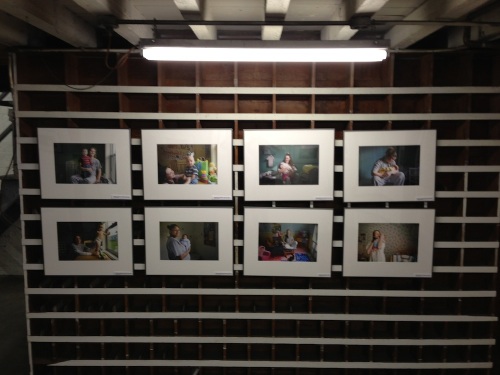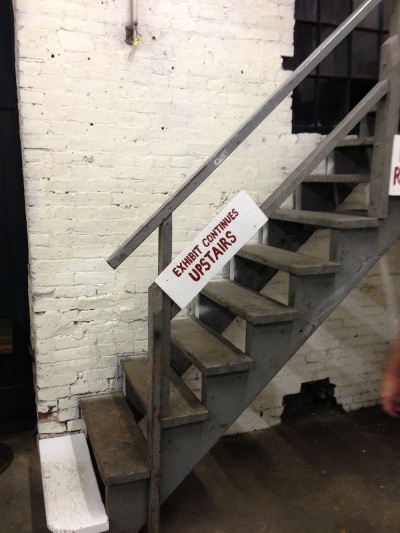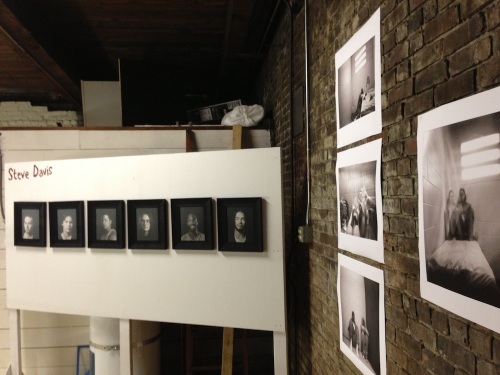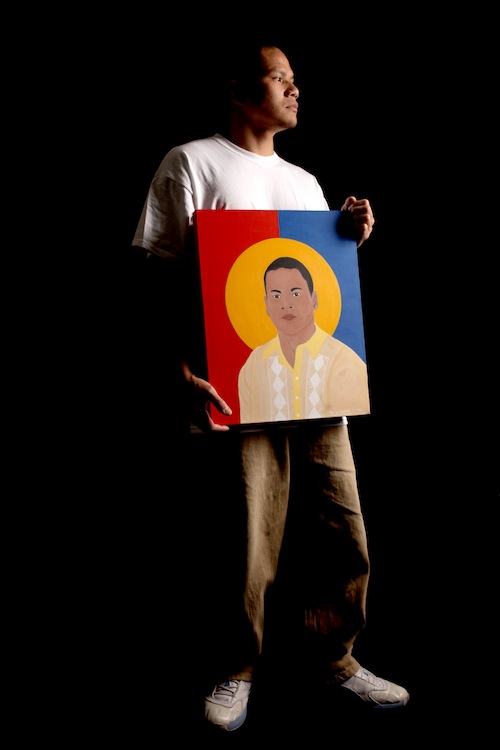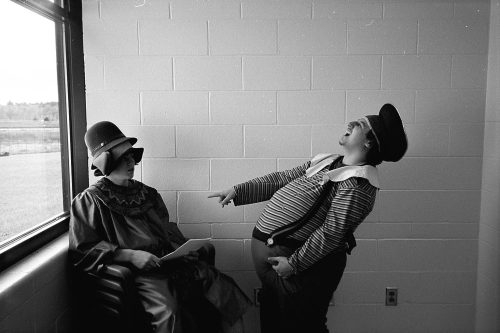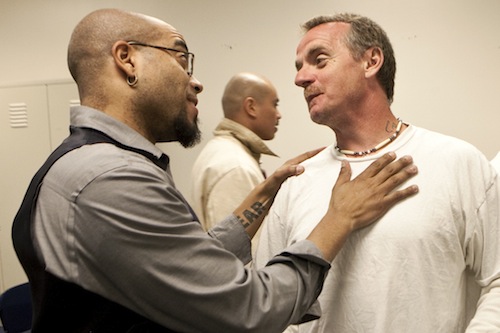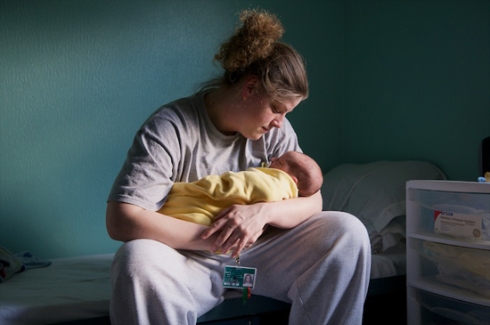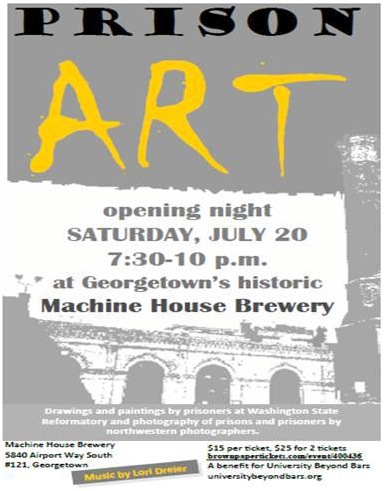You are currently browsing the tag archive for the ‘Tim Matsui’ tag.

I’m taking a break from grading papers to post this.
The papers are about cameras, photographic equipment, imaging systems and networks and written by my 28 students in History Of Photography at San Quentin State Prison. Many of the papers are remarkable, others require further work. They are the second assignment papers of four, over the semester. We’re into Week 9 of fifteen.
For their third assignment, I just handed the students a grip of images by Joseph Rodriguez, Anastasia Taylor-Lind, Katy Grannan, Philip Montgomery, Robert Frank, Paccarik Orue, Garry Winogrand, Spencer Platt, Carrie Mae Weems, Lee Miller, Endia Beal, Richard Renaldi, Richard Misrach and Gordon Parks for them to go at. Eventually, the papers will be published through national and international outlets.


I am coordinating this course as a guest instructor with the Prison University Project (PUP), the largest prison college education program in the country. PUP’s accommodation and administrative support is deeply, deeply appreciated. I am helped financially in this work by a couple of grants; one from the Pulitzer Center for Crisis Reporting and the other from the W. Eugene Smith Fund. A couple of weeks ago, I visited New York to pick up the Smith Fund Howard Chapnick Award. The Smith Fund just posted a video of me explaining the motives, goals and future outcomes of my History Of Photo course.
Beyond the institutionAL support, the support of my students is key. The classroom environment is a space of discovery and conversation … and fun! A lot of our time is spent looking, really looking, at images … and then sussing out how to write about them with clarity and meaningful argument.
Before I collected the Chapnick Award, I had written my acceptance speech on my phone. It’ll be the first and last time I do that; as I took the stage, a brush of a finger sent the text to the trash. I took a deep breath and had to wing it. I got lucky, I hit the key points, notably thanking each of my student-collaborators by name. For the public record, here’s that speech which I later found in the ‘Recently Deleted’ folder in the iPhone Notes.
ACCEPTANCE SPEECH
There are 28 men 3,000 miles away in California who can’t be here tonight. I wish to acknowledge them. It is only because of their thirst for knowledge, their generosity, and the kind welcome they have extended to me to join them in their classroom that I’m here tonight. My work is indebted to their work.
Tomorrow, I’m speaking to New York high schoolers about our class in San Quentin Prison, and last Monday I asked my incarcerated students what they wanted to say to New York teenagers. They instructed me to begin with this statistic: cumulatively, the 28 men have served 501 years. They will serve many more, and a good number of them will never get out.
If you could meet my students you would be as baffled as I with this figure. They’re committed to improving one another as a group and fiercely curious about the world. They’re accountable, changed and wish to foment change wherever hearts and eyes are open enough.
On behalf of them, I would like to thank the board of the Smith Fund, and the jurors of the Howard Chapnick Grant specifically, for helping us add to the urgent conversation about mass incarceration in the United States.

Howard Chapnick once wrote, “Getting close to the action with the camera does not automatically produce great pictures. Developing a relationship with subjects and an understanding of their lives is perhaps more important than the distance from which you photograph. In order to show what life is like for people in prison, for example, the photojournalist has to know and feel what it’s like to have one’s freedom curtailed and be confined to one room with bars. The photojournalist can only find out by gaining the confidence of the prisoner or prisoners, by drawing out the prisoners thoughts, by getting ‘close’.”
I think the same can be said of writers, teachers, curators and editors who all understand the role that photography has in changing the debate and changing society.
These prisons in the land of the free are ours. Prisons failings and abuses are ours. Let us see them.
I want to personal thank my students: Joshua, CJ, Mesro, Troy, Randy, Greg, Shawn, Andrew, Eddie, Caine, Jerry, Gene, Matt, Lawrence, Ray Jr., Lennie, Vah, L.A., Mark, Achilles, Wakil, D, Michael, Sal and Antwan. I’m proud to call them collaborators.
In summarizing his thoughts about prisoners, Howard Chapnick said, “Getting close is not easy, but it is worth the effort.”
Thank you.
Please stay tuned in 2019 for the published writings of the students.






Thanks to Tim Matsui for the filming and editing of the above video. Thanks to Daniel Berman for use of the studio space.
All images were made in 2016 (before my time at San Quentin) by RJ Lozada, who’s documentary short Laps is very much worth 16-minutes of your time.
Srey Neth and Lia move into the STAR House, a secondary transition home designed to help victims of sex trafficking to learn the skills to reintegrate into society without falling back to sex work. The teenagers are residents of Transitions Global and have experienced horrific physical and mental abuse largely at the hands of their fellow Cambodians. Photo: Tim Matsui, 2012 Women’s Initiative Grant Winner
The Alexia Foundation has opened its call for entries for the 2014 Women’s Initiative Grant.
There’s a lot of grants out there but the Alexia Foundation Women’s Initiative Grant is one of the best. Why? Firstly, it’s a large amount of money: $25,000. That’s the type of money needed to get at an issue in any depth. Secondly, the expectations are high. The winner has six months to produce the work and then is encouraged to plug in the product (and the lessons within) to a host of diverse media outlets. Thirdly, it is about women and their needs. When U.S. females earn 77 cents for every dollar a male earns; when women are trafficked worldwide; when women are bearing the brunt of holding together families and communities in the face of the prison industrial complex; when women face issues such as these and others which are part of routine gender violence, the Alexia Foundation is making it’s contribution to bring these issues to the table.
I am also a big fan of journalist Tim Matsui who was awarded the 2012 Women’s Initiative Grant. His project Leaving the Life is about domestic juvenile sex trafficking. Latest update here. A trailer for a film ‘The Long Night’ which accompanies the project and produced by MediaStorm can be viewed here.
Photojournalists worldwide are encouraged to apply to the Women’s Initiative Grant. Deadline: June 30, 2014.
From the press release:
Unlike the first Women’s Initiative grant, which specifically focused on abuse of women in the United States, this call for entries is intended to permit the photographer to propose a serious documentary photographic or multimedia project encompassing any issue involving women anywhere in the world.
While considering the idea of women’s issues, several themes have been suggested, including femininity and the culture of abuse; women making a difference, leading, changing things for the better; gender inequality; the direct connection to women and education, and the impact on birth rates, health of children and the productivity of the women; gender discrimination, women in leadership, women in the military, mental health issues. They are by no means intended to influence proposals, but they may help photographers start thinking about this topic.
The Alexia Foundation’s main purpose is to encourage and help photojournalists create stories that drive change. While our traditional grant guidelines put no limits on the subject matter for grant proposals, a number of proposals about women’s rights in the last few years have been so powerful that we have been compelled to create a grant specifically on issues relating to women.
Winner announced Sept. 1, 2014.
Winner has six months to complete project, by March 1, 2015.
Contact Eileen Mignoni at grants@alexiafoundation.org with any inquiries.

As many of you will know, I recently pitched Prison Photography on the Road on Kickstarter.
The video-pitch for any Kickstarter proposal is key, so I was very lucky to have Tim Matsui offer his time, advice and skills in multimedia for the filming of the video pitch. In offering his help, Tim became the first official supporter of the project so please allow me to say a few words about Mr. Matsui.
Tim was the very first photo-bloke I met when I arrived in Seattle three years ago. At that point, I already new of his committed and extended investigations into human trafficking.
By coincidence, an old university friend of mine worked at a Phnom Penh NGO that Tim had liaised with. As both Tim and I were in the same city, my friend urged us to connect.
Tim knew nothing of me.
Late in 2008, I had just launched Prison Photography and Tim, like many in those early days, was totally baffled about what it was. But he still agreed to meet for coffee. We spoke about Bergen-Belsen concentration camp, Tuol Sleng prison, Blue Earth Alliance, and the mores of the digital age. We didn’t see much of each other for well over a year, but we developed a mutual respect for each others work.
Last month, when I put out the call for help with filming (via the NW Photojournalism group) Tim didn’t hesitate. Two weeks later, he was over at my house with a two camera set up, separate audio track and a set of tricky questions.
Tim wears his heart on his sleeve. He works hard, and he’s also got a bunch of great ideas for his next story telling projects; the only thing holding him back is the hours in the day.
If you want to get to know Tim’s take on the world, photography and storytelling then his blog is a great place to begin. There you’ll find writing about his successes (his recently published Kivalina work, his Emmy nominated Mediastorm multimedia project for the Council for Foreign Relations); about breaking journalism relating to previous stories; about important pioneer projects in journalism such as BaseTrack; and about pressing global issues relating to our digital age, such as reports on conflict minerals in tech-manufacturing industry. You should also check out his very fun docu-short Sasquatch or Bust.
Tim, thanks for the integral help with Prison Photography on the Road. You are a gentleman.














